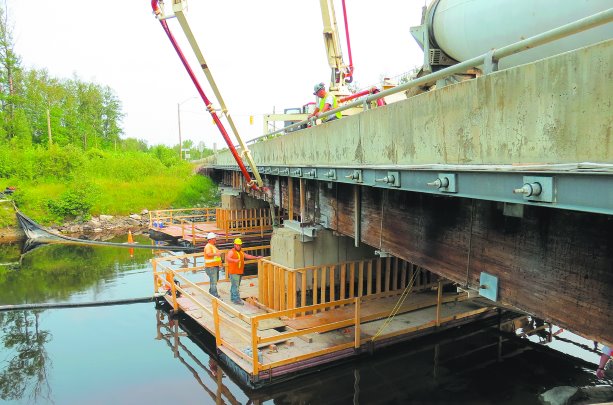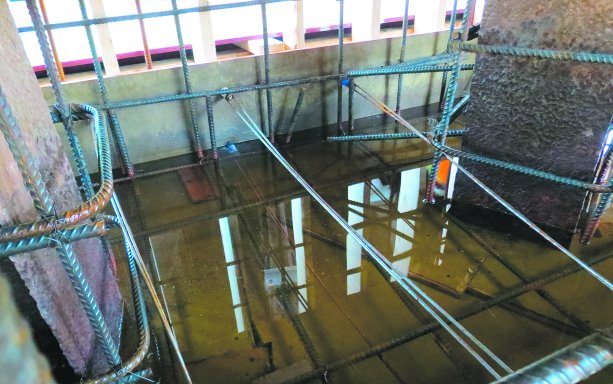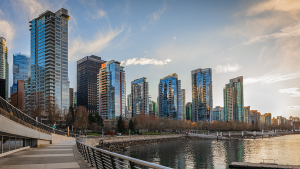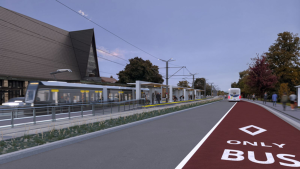A three-month $530,000 bridge repair might, at first glance, seem like a fairly routine project.
Restoring two structurally defective piers on the Ivanhoe River Bridge on Highway 101 in the Northern Ontario community of Foleyet was anything but straight-forward for the Ministry of Transportation, design consultant AECOM, and general contractor Teranorth Construction & Engineering Limited.
Over the course of the past summer, the Sault Ste. Marie-based contractor rehabilitated the piers by encapsulating them in concrete. It was an undertaking requiring the use of two turbidity curtains and two floating platforms.
Driving the project schedule was an Aug. 31 deadline, which was the last day any in water work could take place. A low-risk assessment was conducted by Morrison Hershfield to satisfy any concerns by the Federal Department of Fisheries and Oceans about the in-water work, says MTO contract service administrator John Garrett.
"There is very fine distinction between an emergency and urgent, but this (the project) was urgent," says Garrett in a providing a short history of the project.
In 2013 a mandatory biennial inspection of the three-span, 54-year-old laminated creosote-treated timber bridge, revealed major structural problems with piers which were comprised of eight steel H-piles each and topped with concrete caps.
"The two exterior piles on each side were severely corroded with significant section loss at their tops. The remainders of the piles were in better condition."
Due to the fact that the piers were located under the bridge, it was impossible to drive new piles and/or build a coffer dam to facilitate dewatering without removing the deck, says Garrett.
And closing the bridge, even for a short period, was not considered a feasible option. Highway 101 is the only link between Chapleau and Timmins, Ont. and the Ivanhoe River Bridge is a critical link for Foleyet, a mining and forestry community of about 200 people about midway between those larger centres. Residents have to drive the approximately 120 kilometres to Timmins for groceries and other necessities, says Garrett.
"Therefore it was felt that this bridge should be open at all times, at least for single lane traffic until the repair work was completed."
AECOM opted to extend the concrete caps to encapsulate the existing piles in sound concrete and performing surficial concrete repairs. That required the building of wooden watertight forms around the piers and using a number of methods to manage the not insignificant environmental risk of sand, chunks of concrete, and other contaminants falling in the river which has high and rapidly fluctuating levels, he explains.
Another safeguard was the turbidity curtains. On the recommendation of the contractor, they were strung across the river upstream and downstream of the bridge and wrapped around the piers.
"The bottoms were anchored with heavy chain strung through sleeves in the fabric. This allowed for a uniform and secure anchor while being able to form to the contours in the river bottom."
Not only did the curtains isolate the work area from the river, they also diverted the current from flowing into the work area, he says.
In addition, the project partners enlisted the assistance of the Ministry of Natural Resources in periodically controlling the flow of water through Ivanhoe Lake Dam, 13 kilometres upstream from the bridge. As a result, the water receded to 200 mm of the bottom of the approximately 11.5-metre long, 1.5-metre wide, and 1.1-metre high wooden forms.
This allowed the contractor to work from the floating platforms and place the bottom of the forms under water without having to employ divers, says Garrett.
Even so, building the forms was not easy. Not all the H piles were straight and the fact that many were battered, corroded, and twisted made it extremely difficult to cut and fit plywood to ensure a watertight fit. In addition, water levels rose before sealant could be applied and the contractor had to use a variety of products and methods including rubberized caulking, environmental friendly sealants and expanding foam to fill cracks in forms, he says.
And there was still residual water which had to be pumped out of the forms before the concrete pouring could take place and even during the pour. Because of heavy rains, that pumping operation had to be conducted more than a few times, he points out.
Concrete from a truck on the bridge poured into the two piers in two operations. The bottom 400 mm of both were poured in one day and allowed to cure, "in an effort seal the bottom of the forms and add strength for the weight of the remaining concrete. The top half of the concrete extension was poured in a single day.
"They (the contractor) did a really, really good job," says Garrett.












Recent Comments
comments for this post are closed